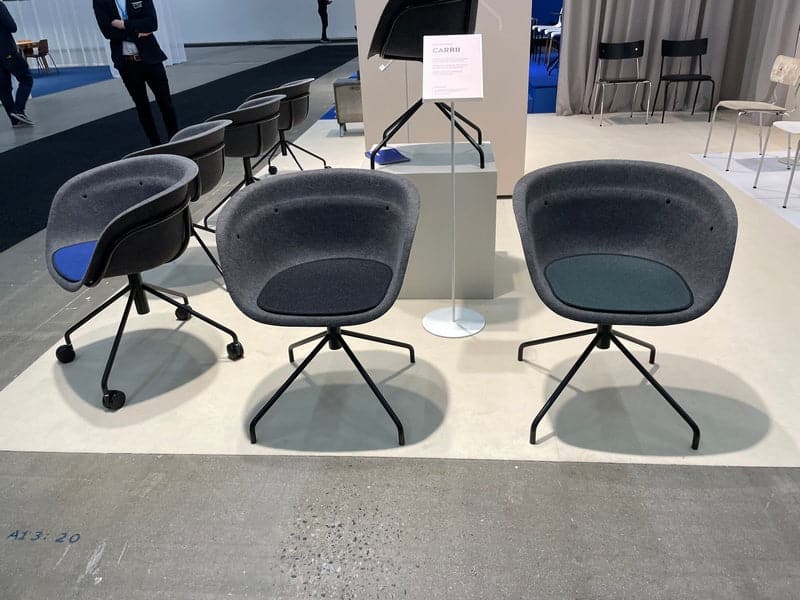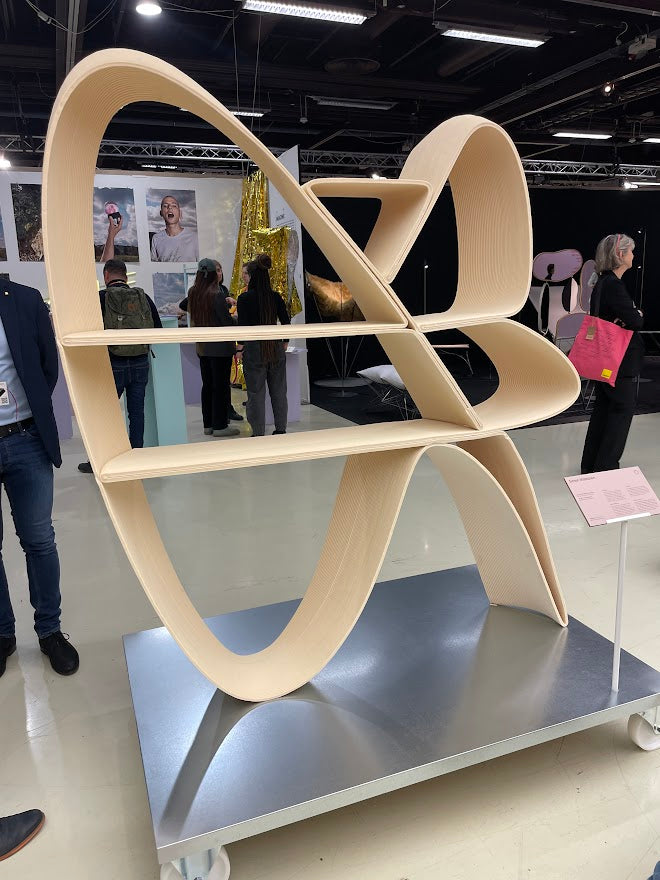My visit to the Stockholm Furniture Fair this year was my first since 2020 (which was my last international event before Covid). What struck me immediately was that the event was smaller and the footfall lower. As I found at Orgatec last October, many significant manufacturers have decided not to participate and many of the traditional audience have decided to stay away.
This is not the place to speculate about the future of exhibitions but there is no doubt that we have all learned how to meet virtually in the last few years and, whilst the hands-on (or bums-on) experience of new products can never be fully replicated, the costs of travel, hotels and time away from the day job – for exhibitors and attendees alike – are now being considered more carefully by both individuals and their employers. There is also the environmental impact of the travel and the traditionally wasteful nature of exhibition staging (although there were signs of some progress in this respect at Stockholm).

As expected, sustainability was a recurrent theme throughout the event and PET (polyethylene terephthalate) was a recurrent material. Available in abundance because it is the recyclable plastic from which water bottles are made, it appeared at the exhibition in seating, decorative and acoustic products. Whenever PET crops up in conversation, I find myself wondering whatever happened to drinking water from the tap but, again, that’s a debate for another time and place!
I was reminded at a Camira iinouiio seminar that only 1% of all textiles globally are recycled into new products. This is just one example of how the office furniture industry has been notoriously wasteful in the past – and the habit of refitting offices every few years was also bound to be challenged. Inevitably, the questioning has accelerated with the change in working habits and locations brought about by the pandemic, alongside the intensification of global efforts towards Net Zero.

Whilst many individual manufacturers are making steps in the right direction (cradle-to-cradle product designs, recycled and compostable fabrics, modular manufacture, glue- and staple-free assembly are examples), vast quantities of components are still being imported from the Far East. Of course, there is also the presence of millions of tons of legacy product already in use.

In my view, the greatest potential now lies in 3D manufacturing. It is no longer new technology and it still has a very long way to go, but the potential – once the speed issue is finally addressed – is enormous. Most importantly, it can use recycled components as its base material. This was most conspicuous in the Glasshouse area where students and young designers demonstrated concepts unhampered by legacy thinking.